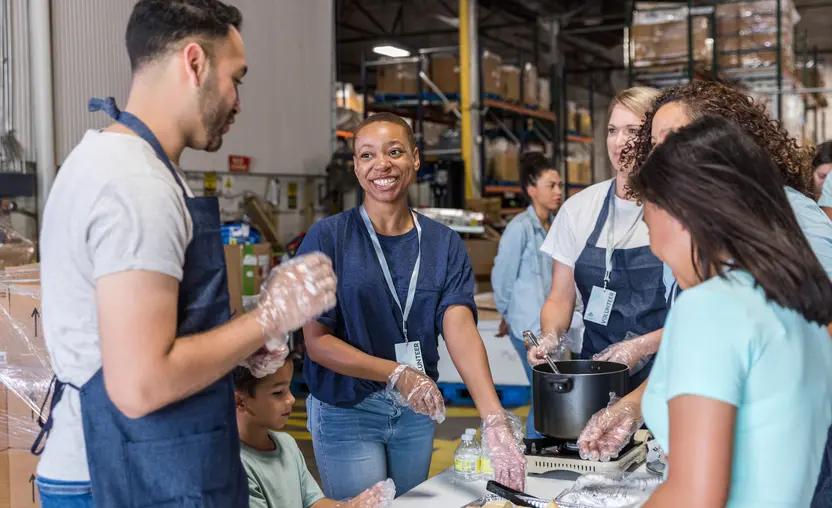Leading a nonprofit organization with a purpose that resonates so strongly that people are looking for ways to contribute their free time to help is a great sign of success ahead. Volunteering is a time-efficient and low-cost way to build relationships with individuals who are already invested in your purpose. It can also be a very convenient form of cultivation, as prospective donors will come to you and have the opportunity to experience firsthand how you deliver on your purpose and promises.
That being said, your volunteer program has to be in top form to fully leverage your volunteers’ time. So, if you’re new to managing a volunteer program, follow these tips to get up and running.
How to enhance your existing volunteer opportunities
To ensure a mutually beneficial experience for volunteers and staff, dedicate time to identifying, planning, and promoting your volunteer opportunities based on your needs and your supporters’ preferences.
First, look internally to gauge which initiatives you need help launching or maintaining. For example, the best-known use for volunteers is to have them run your fundraising events, but there are other ways you can involve them as well. Enlist your volunteers to:
- Distribute fundraising prizes, such as branded merchandise
- Help plan future fundraisers
- Spread the word about your organization to beneficiaries and prospective supporters
- Sort through in-kind donations
If you have an existing volunteer program, create a survey to get to know your volunteers and determine what is working and how your program can grow in the year ahead. Be sure to ask your most loyal volunteers about new programs you can adopt to capture the interest of younger generations, as they’re less likely to volunteer than their Baby Boomer or Gen X counterparts but can still provide helpful support.
3 essentials to creating new volunteer opportunities
1. Identify six to eight volunteer opportunities
Remember, no task is too small to help keep your nonprofit running. Choose simple tasks so that as many people can participate as possible, regardless of skill or interest.
Remember to offer a mix of in-person and virtual volunteer opportunities. For instance, your in-person volunteers can assemble donor thank-you letters or even plant flowers to beautify your location. Your more experienced volunteers can perform more important tasks, such as onboarding new beneficiaries that are receiving services. Virtual volunteers can post to your social media pages, make thank-you calls to donors, help write appeals, identify prospective beneficiaries online, or follow up with event attendees.
Once you know which opportunities you’ll offer, tell your volunteers how long a shift will be, when the shift will occur, and what to bring to get the job done. Record sign-ups and other data in your volunteer management software so that you can always stay updated on your need for more help.
2. Thoroughly onboard volunteers
In order to make your volunteer program a safe and enjoyable space for everyone, comprehensively onboard each volunteer so that they know what they’re supposed to be doing and how to do it right. Prioritize your volunteers’ safety above all else and only ask them to do tasks that they’re comfortable with. Also, you should always obtain a signed waiver from every volunteer.
Remember that your volunteers represent your organization, so you should ensure they understand your expectations for each job. For instance, for remote volunteers posting to your social media, create a document with content guidelines. Accidents and miscommunications can happen, so mitigate them as much as possible by thoroughly preparing your volunteers.
3. Promote your new volunteer program updates
Promote new volunteer opportunities on social media and in targeted email appeals to all of your contact groups, such as board members, event sponsors, donors, event attendees, and newsletter subscribers. Ensure you remain active on your communication channels so you can answer any questions from prospective volunteers.
Additionally, you can create a volunteer page on your website. This page will list all pertinent information for your volunteers, such as upcoming opportunities, sign-up forms, and photos from previous events. This helps your volunteers feel more connected with your nonprofit and makes it easy for them to sign up for future opportunities.
The power of engaged volunteers
Your main goal is for volunteers to have fun, gain a better understanding of your work, and leave with the joy of knowing they’ve made a difference. Simply ensure you keep their preferences in mind and continually ask your volunteers for feedback so you can improve your program more every day.




